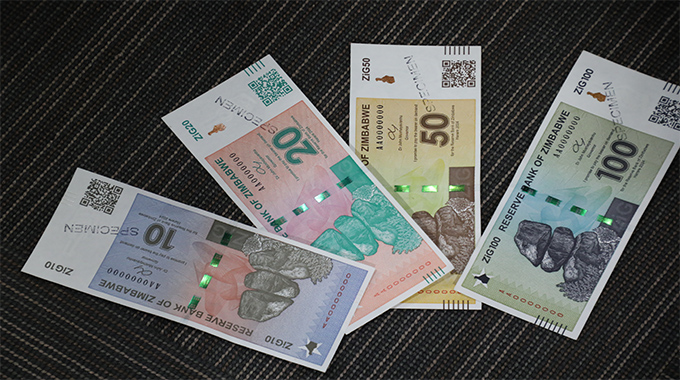EDITORIAL COMMENT: Let’s support manufacturing sector increase capacity utilisation

GOVERNMENT needs to ramp up its support for the manufacturing sector by ensuring that a conducive environment is there for industry to perform to expectations. The success of the Transitional Stabilisation Programme, its short term economic blueprint, is hinged on a productive sector that produces for both the local and export markets to generate much needed foreign currency for the country.
While the manufacturing sector is currently hamstrung by a number of obstacles which prevent it from increasing capacity utilisation, there is a ray of hope as evidenced by the operations of some companies which are performing miracles amid all the gloom and doom. One such firm, Justin Clothing Private Limited, a Bulawayo company, is producing at almost 100 percent capacity utilisation despite the challenging macro-economic environment in Zimbabwe. The company, situated in the Belmont Industrial site, employs 70 permanent staff, with some on contract.
It supplies 80 percent of its products to the local market consisting of retail and clothing outlets. About 10 percent of their products are exported to Kenya and Tanzania. Though it’s a small operation compared to other bigger clothing industries, its resilience and remarkable performance in the face of adversity is a shining example for the rest of the manufacturing sector which has been struggling to raise capacity utilisation over the years.
Justin Clothing faces the same operational challenges confronting other companies in Zimbabwe but this has not fazed them. These include limited access to foreign currency to source fabrics from Indonesia and China as well as inconsistent power supplies, which constrains their ability to operate efficiently and compete with cheap imports from abroad.
Despite these setbacks, the firm has been able to stay above the water and might perform even better if conditions improve and they are given the necessary support. The clothing sector has generally performed well in Bulawayo with companies such as Paramount Garments and Archer Clothing notching impressive results notwithstanding the challenges they encounter. They are able to supply huge retail chains such as Edgars and their products compare favourably with imports from China in terms of quality and pricing.
The country’s industry can therefore thrive and ramp up production despite the tough operating environment. Last year, Zimbabwe’s manufacturing sector capacity utilisation grew 3,1 percentage points to 48,2 percent in the 12 months to August 2018, according to the Confederation of Zimbabwe Industries (CZI) manufacturing sector survey for 2018. This year capacity utilisation is expected to drop on the back of a harsher economic climate.
Projections for this year indicate that the country’s manufacturing sector will grow by 1% with the outlook attributed to drought, power outages and a shortage of foreign currency. Capacity utilisation is projected to drop to between 34% and 40% in 2019.
By this time last year, average capacity utilisation of high performing industrial companies was 80 percent, with drinks, tobacco and beverages sub-sectors realising exceptional capacity utilisation levels as high as 93 percent. Capacity utilisation for companies such as those involved in production of foodstuffs, beverages, tobacco, wood and furniture and other manufactured goods had average of above 50 percent.
The growth in capacity utilisation was driven by SI 64 of 2016 promulgated by the Government to prop up the local manufacturing sector. By November last year, capacity utilisation had slumped by six percent to 42 percent attributed mainly to the suspension of SI 122, foreign currency deficiencies and the fluctuating currency value. Going forward, Government needs to address a number of issues choking industry and curtailing its ability to fire on all cylinders.
What is encouraging is that there is clarity on the currency issue with the Zimbabwe dollar now the only legal tender. Government now needs to actively support industry by ensuring a consistent supply of electricity and access to foreign currency for raw materials and retooling purposes. CZI has already expressed confidence in the country’s new currency intervention, saying it will lead to the sector being more competitive on the export front.
Already, the Zimbabwe dollar, which has been floated, has gradually found its true value where it is trading at around ZWL10 to the United States dollar on the official interbank market. It’s holding steady with very minimal fluctuations giving hope of a stable currency. Compared to the 1:1 exchange rate, this is a favourable scenario for exporters whose products are now cheaper and can compete.
On access to foreign currency, Government should ensure that the interbank market operates efficiently so that firms can buy and sell forex on a willing-seller willing-buyer basis. Power is another economic enabler and we are glad that Government is actively pursuing efforts to stabilise supplies.
The Eskom deal (where Zimbabwe is getting 400MW from South Africa) and negotiations with Mozambican firm Hydro Cahora Bassa for up to 400MW of electricity will ensure that the country has a consistent supply and minimise disruptions to industry. We also believe that Zesa should prioritise industry and spare it from load shedding as much as possible.








Comments